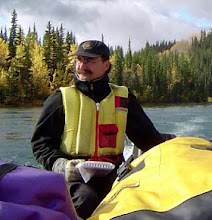 |
| Kapu Te Rangi Ridge and Whakatane. |
Whakatane (pronounced fuck a tonie, like tonic) has a dramatic sea front location behind a long timber-strewn sand beach with the river running between town and the dunes out of a lush interior of farms and paddocks. The Whakatane land and sea scape, dotted with arrested volcanic eruptions, reflects the igneous origins of this land and the fiery conflicts between peoples that still simmer today.
 |
| The trail is currently being upgraded by a class from the local Trident High School. Their accompanying signs, modelled on a NZ beer brand's popular adverts, adds a bit of humour to the trail. |
 |
| No dogs allowed, this is a kiwi reserve. No exceptions for dogs with certified kiwi aversion training. There are even contests for canine kiwi aversion. Not sure how they work, how far away does your dog run when it sees a kiwi? Besides, poison and killing traps for stoats are also scattered through the reserve. I later learn that a bite of bait kills an animal within 4 metres. |
There is a hiking trail that follows the great rocky ridge that separates Whakatane from the Ohope beach to the east. A steep climb to the top of the ridge back of town, the refuge place in case of a tsunami, and then one heads to the higher ground of the ridge's central spine where I visit the first of the three pa (fort/settlement) that dominated this regional landscape for almost a thousand years. The first humans to the islands of Aotearoa were Maori, the name applied by newcomers to all indigenous peoples, who arrived in their waka (canoe) in 1100 according to the logo of the Whakatane District Council. The waka are one of the key identifiers of the diverse groups represented by the present day term Maori, each iwi (tribe) being a descendent from one of the waka that settled the islands over a period of some 400 years. Waka papa means geneaology or lineage. At the conference I attended last week most presenters, Maori and Pakeha (newcomer) alike, opened their papers with a brief waka papa in Maori. I did the same, but in English, when I gave a lecture on the Yukon treaty to the grad students at Te Whare Wānangao Awanuiārangi (indigenous university) yesterday. Nobody will bother to listen to you if you don't know who you are or where you come from.
 |
| The Whakatane River enters the Pacific Ocean from behind the beach. |
For almost a century there was armed conflicted either amongst Maori or between Maori and Pakeha. This history of killing, rape, relocation, and exile still lingers in Maori memory. There was time when children were named after the suffering of their parents and grandparents, the mark of these hard times built into the waka never to be forgotten. In Whakatane today however there are signs of coming together. A set of display panels, in both English and Maori, around town speak to the long presence of the Maori and their distinct relationships with the landscape that Pakeha have moved into. The benches in parks and along the river walk are shaped like the waka that brought the first humans to this place.
 |
| Capt. Cook, killed by Maori, and Te Tahi O Te Rangi from the first waka in 1100, ride their inter-sectioned canoes at The Bean coffee shop in downtown Whakatane. |











We camped at Ohope Beach for a couple of days, and took a boat tour out to White Island, an incredible experience (at least as good as anything at Rotorua, without the people). New Zealand is the most dog-unfriendly place I've ever been to because of the appalling toll of kiwis they've taken - we saw a few signs on farms saying "Dogs Will Be Shot on Sight".
ReplyDelete